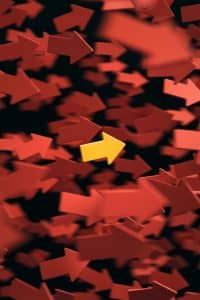
There are many myths about the pharmacological treatment of ADHD. These may lead to the rejection of medication or delay in treatment, and in many cases, the achievement of goals in the patient’s life. In this article, we want to clarify some information about the pharmacological treatment of ADHD so that you can choose based on evidence-based information.
What are the medications used to treat ADHD?
The medications used in the treatment of ADHD are divided into two groups: stimulants and non-stimulants. Within the group of stimulants are methylphenidate and amphetamines. Non-stimulants include atomoxetine, guanfacine, and clonidine, among others.
These drugs act in specific areas of the CNS, modulating the availability of neurotransmitters involved in the appearance of ADHD symptoms. The pharmacological effectiveness and scientific evidence support the use of these medications; however, it is important to clarify some myths about their effects on both young people and adults.
Myth #1: ADHD treatment leads to addiction

One common concern that surrounds the pharmacological treatment of ADHD is the risk of developing an addiction to the medication. It is important to highlight that scientific studies point to the pharmacological treatment of ADHD as a protective factor against substance abuse, which is a frequent impulsive behavior, and comorbidity in patients with ADHD.
What is a fact is that stimulant drugs (amphetamines and methylphenidate) in high doses (ones that are higher than what is prescribed) produce euphoria and therefore have an addictive potential, being greater in amphetamines than in methylphenidate. However, the therapeutic doses used in the medication management of ADHD are well below that range.
One way to decrease the risk of abuse is to decrease the frequency of drug administration. One option is extended-release stimulants, which ensure therapeutic levels of the medication without the need to take multiple doses throughout the day. In young patients, it is recommended that the treatment be supervised by a family member to ensure that the provider’s instructions on medication use are followed.
Non-stimulant drugs (atomoxetine, clonidine, guanfacine) have no addictive potential.
Myth #2: ADHD treatment increases the seizure risk

Epilepsy and ADHD are two conditions that often coexist. On the one hand, having ADHD increases the risk of seizures by 2.5 times, while 30 to 70% of people with epilepsy have symptoms of ADHD. The coexistence of both conditions is not related to the pharmacological treatment of ADHD. On the contrary, the treatment decreases the frequency of seizures in some patients.
Myth #3: ADHD medicines affect children’s growth

Another reason some parents refuse pharmacological treatment for ADHD is that they believe it may reduce the height that their children will grow to in adulthood. In some cases, this belief leads to the suspension of treatment during weekends or during the holiday season.
Studies indicate that neither stimulant nor non-stimulant drugs affect the height attained by patients with ADHD. In some cases, it has been observed that patients with ADHD reach their final height a little later than their peers. Since there is no relationship between the pharmacological treatment of ADHD and the height reached by the patient, periodic suspension of the medication is not necessary.
In conclusion, pharmacological treatment of ADHD is safe both in childhood and in adult life. When it is established from an early age, it improves the patient’s prognosis, even acting as a protective factor against substance abuse and other comorbid disorders. The best way to prevent unwanted effects and obtain good results is to go to a mental health provider and follow their instructions. It is also helpful to bring up any concerns you may still have so that your provider can answer these questions for you.
Edited by:
Animo Sano Psychiatry is open for patients in North Carolina and Georgia. If you’d like to schedule an appointment, please contact us.
Other Blog Posts in
Animo Sano Psychiatry is open for patients in North Carolina, Georgia and Tennessee. If you’d like to schedule an appointment, please contact us.
Get Access to Behavioral Health Care
Let’s take your first step towards. Press the button to get started. We’ll be back to you as soon as possible.ecovery, together.




